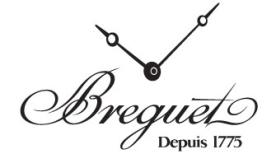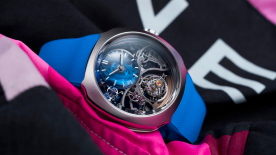Sometimes, looking ancient is just that: a look. Breguet's Tradition watches feel like they came out of an 1810 workshop, but look like no other and are made according to cutting-edge techniques. It all began around the time Abraham-Louis Breguet, the brand's founder, was hard at work at the dawn of the 19th century. He shaped his movements in a very specific manner, one that is almost the opposite of the way things are done today. A contemporary calibre gathers all bridges, balance wheel and escapement on its back. Everything worth looking at and working on sits against the wrist. The other side is flat, boring and hidden under a dial. The Traditions are built inside out : everything there is to be seen, every organ is right there, dial side, all the more visible as...they don't really have a dial. Yet that doesn't mean the back of the movement is devoid of interest. On top of a few remaining components, all of them shaped in unique ways, the Traditions boast a very rare and striking surface finishing. All of them feature a grainage pattern, a myriad of minuscule holes punched into the metal surface. They give the movement a matte and regular appearance.
Two other construction principles make these watches stand out. First, their barrel, the piece containing the long mainspring that stores the watch's energy, is at the centre of the movement instead of being on the side. Which means the hands cannot be placed where they usually belong. All Traditions therefore display time on an off-centered, hand-guilloché dial, just like many of their ancestors. Second point, they have a lot of bridges. Making cost-efficient movements entails pooling resources. Three or four bridges are usually enough to cover the movement's organs. The Traditions have at least six and up to ten. This is an important point because these bridges are not of the usual, flat kind. They are three-dimensional, cantilevered and T-shaped, also a tribute to Mr. Breguet's original designs. They play an important part in the Tradition's dramatic design.
Such architectural constraints could have limited Breguet's ability to make several, different Tradition watches. But the brand begs to differ. The Tradition is a full range of watches. It starts with the Ref. 7057, which displays the hours, minutes and power reserve. The Ref. 7067 adds a second time-zone to these basic functions. Then comes the Ref. 7097 with retrograde second, launched to celebrate the 10th anniversary of the line. It is the first self-winding Tradition. To stick to the original design, the watch's rotor is shaped like in M. Breguet's “perpétuelle” watches, a term by which he meant automatic. A big arrow, a small axle, a heart, it is hard to put a name on that shape, but it is easy enough to recognize.
As early as 2007, Breguet made the Tradition Ref. 7047 a flagship for one of the most sophisticated complications. It was only logical that there be a tourbillon in one of those. But the brand chose to couple it with a chain and fusée mechanism. This exceptional device evens out the torque provided by the mainspring to the escapement. The latter always receives the exact amount of energy it needs to run smoothly and in keeping with chronometric standards.
To pay further homage to its founder's idiosyncratic designs and make a case for itself, Breguet released two highly complicated Tradition watches during the 2015 Baselworld fair. The first is the ref. 7077 (see our full review of this watch), a chronograph built according to sophisticated guidelines. The chronograph part of its movement is powered by an independent source of energy and has fully autonomous regulating organs, balance wheel and escapement, in order never to disturb the watch's timekeeping. We recently covered in great detail the most sophisticated Tradition ever, the Ref. 7087 with tourbillon and revolutionary minute repeater.
One more point, which clearly demonstrates Breguet's ambitions for the future and the brand’s taste for paradox. Even though these are the most ancient-looking watches the brand manufactures, they were the first Breguets to be fitted with silicon escapements (all the collection now has them). Who said the future couldn't go along with the past?







